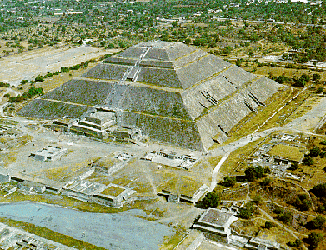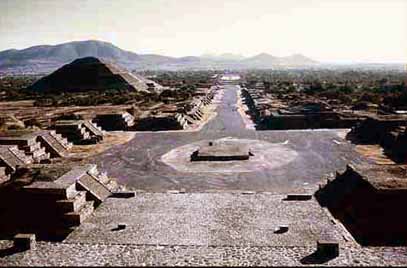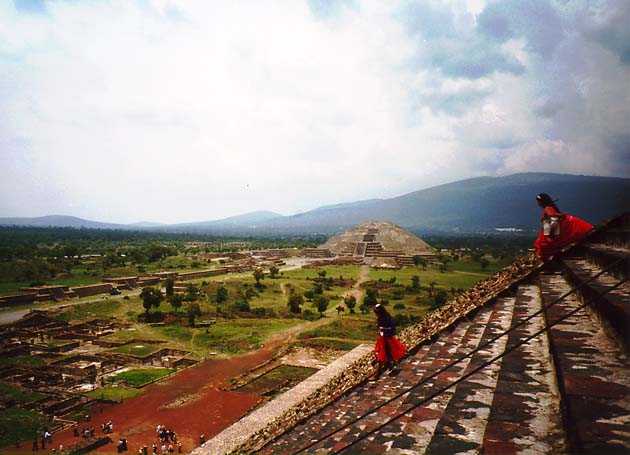Orthodox archaeologists have been excavating the ruins for over 100 years. Though the culture that built the city has been lost to history, many scholars outside the established academic circles, have produced extensive evidence that the precise arrangement, proportion and alignment of it's many monuments expresses, at the very least, advanced and detailed astronomical knowledge well beyond that with which they have been credited.
According to Graham Hancock and others, the Pyramid of the Sun and the Great Pyramid of Giza in Egypt are almost - or very nearly - equal to one another in base perimeter. Along with this thought there is also the statement that the Pyramid of the Sun is "almost" half the height of the Great Pyramid, though there is a slight difference. In addition, the base of the Pyramid of the Sun is 97% of the Great Pyramid's base.
The ratio of their height to the perimetre of their base are both based on the mathematical ratio 'pii'. The perimetre of the base of the Pyramid of the Sun is 4pii times its height, whereas the Great pyramid of Giza's base perimetre is 2pii times its height. The mathematical ratio 'pii' is based on knowledge of geometry, so the use of 'pii' also implies knowledge of sophisticated mathematics.
In 1971, a large cave underneath the Pyramid of the Sun was discovered which throws light on why the pyramid was constructed, and perhaps even on why Teotihuacan itself was built where it was. Caves were revered in ancient times, as representative of the womb where Men entered, and Gods emerged. As a result, cave structures were intensely religious areas.
The cave is actually a natural lava tube enlarged and elaborated in late ancient times. The Teotihuacan Valley is a side valley of the Valley of Mexico and is one of a number of natural basins in the midst of an extensive region of volcanoes; therefore, there are many caves formed from the tubes of old lava flows.
Another similarity between these sites is thus; although the Second Pyramid at Giza is shorter than the Great Pyramid, their peaks are at the same height above sea level because the Second Pyramid is built on correspondingly higher ground; the same holds true at Teotihuacan, where the smaller Pyramid of the Moon is built on ground some thirty feet higher than the Pyramid of the Sun, giving their peaks equal heights above sea level.
For mathematical similarities bewteen these two great ancient monuments, click here. |



